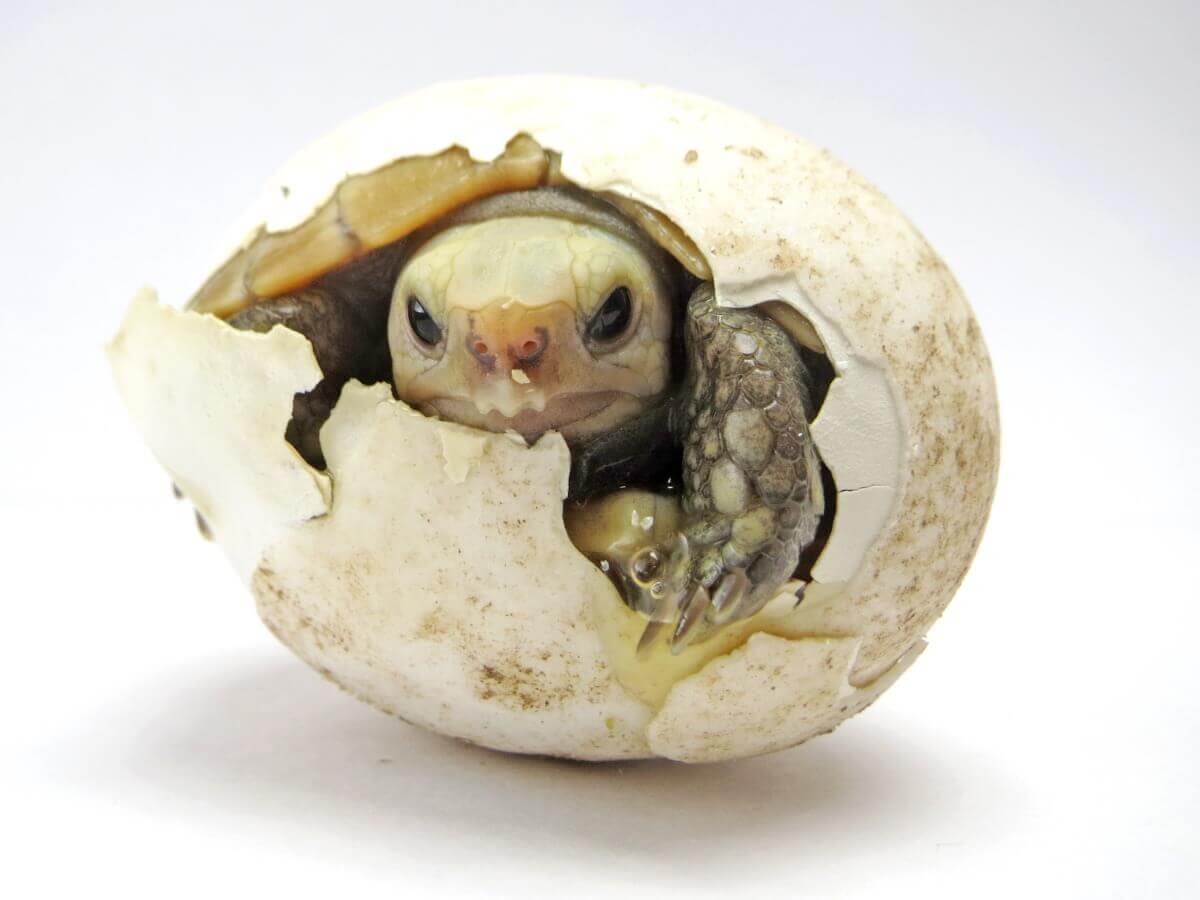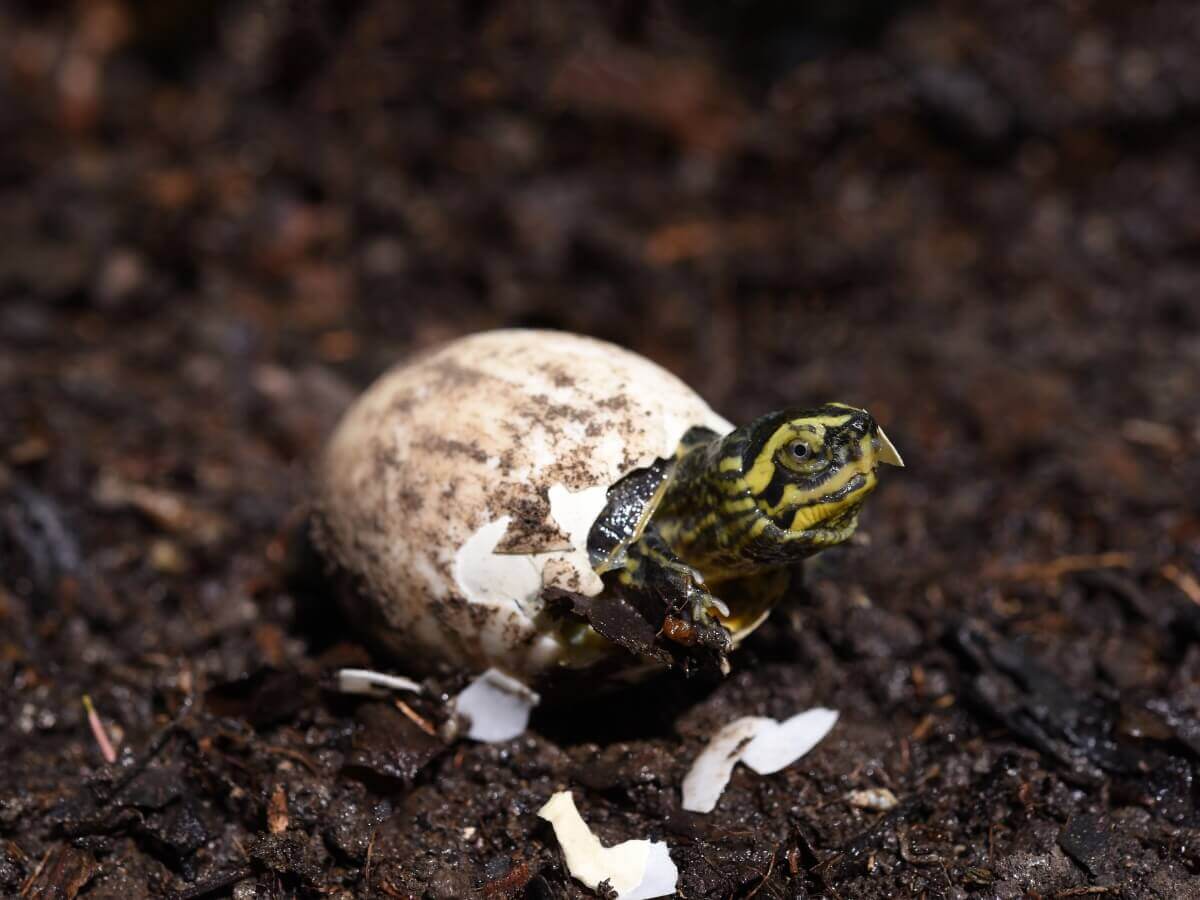How Does Temperature Determine the Sex of Turtles?

Turtles are oviparous animals that come to beaches or nearby areas to lay their eggs. During this process, the eggs are kept inside small holes in the sand. Thanks to this, a kind of natural incubator is formed that allows the babies to develop. However, the temperature does more than just incubate the eggs; in some cases, it can determine the sex of turtles.
This phenomenon is nothing new within the reptile group, as crocodiles also exhibit this peculiar trait. In addition, this has become very important due to the global climate situation, as the change in the temperature of our planet could end up affecting the species. Find out how temperature can determine the sex of turtles in some cases.
How is sex determined in mammals?
In mammals, male or female characteristics are determined by a large number of genes. All of these are grouped together in structures known as chromosomes, which, in the case of human sex determination, are known as X and Y. The Y chromosome is what gives the male characteristics to the individual, while the X does the same with the female traits.
Simply put, the presence of these chromosomes is what defines whether a mammal is male or female. However, some reptiles break this rule, as temperature is what determines their sex.

Can temperature determine sex in turtles?
Reptiles are a group of animals that are very closely related to their environment. This is easily observed by their ectothermy, which means that they need warmth from the outside to regulate their body temperature. For this reason, it isn’t uncommon for this trait to affect other characteristics, such as sex determination.
In short, reptiles define whether their offspring are male or female according to the amount of heat the eggs receive. During this process, genes are also involved, just in a different way. The role of temperature is to “turn on” and “turn off” these genes, which are responsible for giving either female or male characteristics.
How is sex defined in turtles?
The sex of the hatchlings of some turtles (like Chelydra serpentina) is determined by temperature, as the sand in which they bury their eggs is capable of maintaining heat. Consequently, they depend entirely on environmental conditions to define whether their offspring will be male or female.
If turtles are incubated at a temperature below 26 degrees Celsius (79 Fahrenheit), they will be male. On the other hand, for a female to develop, they have to be exposed to a temperature higher than 31 degrees Celsius (88 Fahrenheit). In this way, the sex of the turtles is decided by the heat that exists at that moment in the sand.
Are all the hatchlings from the same nest born of the same sex?
Although temperature is the most important factor in defining sex, it isn’t the only factor that has an impact on this characteristic. For starters, the holes that turtles dig are quite wide, so each egg is scattered in different parts of the nest. This is what allows males and females to hatch in the same place, as the conditions are different depending on the position of the egg.
In other words, the size of the hole allows the amount of heat provided to the eggs to be different for all. In this way, hatchlings of both sexes hatch in the same nest. Despite this, the temperature of the environment defines whether more males than females hatch or vice versa.
Climate change as an extinction threat
The planet has an incredible way of distributing heat to all regions of the world. However, the temperature has begun to increase in recent years, something that has been reflected in subtle and progressive changes in the climate. For this reason, this process has been referred to as climate change.
For some species, an increase in the amount of heat isn’t usually a problem. However, for turtles, it’s a serious threat, as they depend on temperature to define the sex of their offspring. In fact, as warming increases, there’s a greater likelihood that the offspring will be female.
Because of this, at some point, climate change could cause the males of some species to disappear.

An ongoing problem
You may think that the effect of overpopulation in females won’t happen for many years. However, some scientific reports have already found the first cases. According to an investigation carried out by the National Oceanic and Atmospheric Administration Office of Oceanic and Atmospheric Administration According to research carried out by the US National Park Service, some populations of the green turtle produce 99.1 % of females.
Turtles aren’t only threatened by external factors, but environmental changes are also a risk for them. In addition, climate change is probably another consequence of human consumerism. Thus, man could be guilty of the extinction of several species, albeit indirectly.
All cited sources were thoroughly reviewed by our team to ensure their quality, reliability, currency, and validity. The bibliography of this article was considered reliable and of academic or scientific accuracy.
- Jensen, M. P., Allen, C. D., Eguchi, T., Bell, I. P., LaCasella, E. L., Hilton, W. A., Hof, C. A. M. & Dutton, P. H. (2018). Environmental warming and feminization of one of the largest sea turtle populations in the world. Current Biology, 28(1), 154-159.
- Herrera, C., Guerra, E., Penalver, V., Rosas, A., Wei, Y., Pringle, J., … & Song, B. (2020). The Impact of Temperature-Dependent Sex Determination on the Population Dynamics of Green Sea Turtles (Chelonia mydas). Revista Bionatura, 5(1), 1029-1038.
- Ewert, M. A., & Nelson, C. E. (1991). Sex determination in turtles: diverse patterns and some possible adaptive values. Copeia, 50-69.
- Escobedo-Galván, A. H. (2013). Temperature-dependent sex determination in an uncertain world: advances and perspectives. Revista mexicana de biodiversidad, 84(2), 727-730.
- Maldonado, L. C. T., & Larios, H. M. (2006). Aspectos moleculares de la determinación del sexo en tortugas. CIENCIA ergo-sum, Revista Científica Multidisciplinaria de Prospectiva, 13(2), 176-182.
- Díaz Cordero, G. (2012). El cambio climático. Ciencia y sociedad.
This text is provided for informational purposes only and does not replace consultation with a professional. If in doubt, consult your specialist.